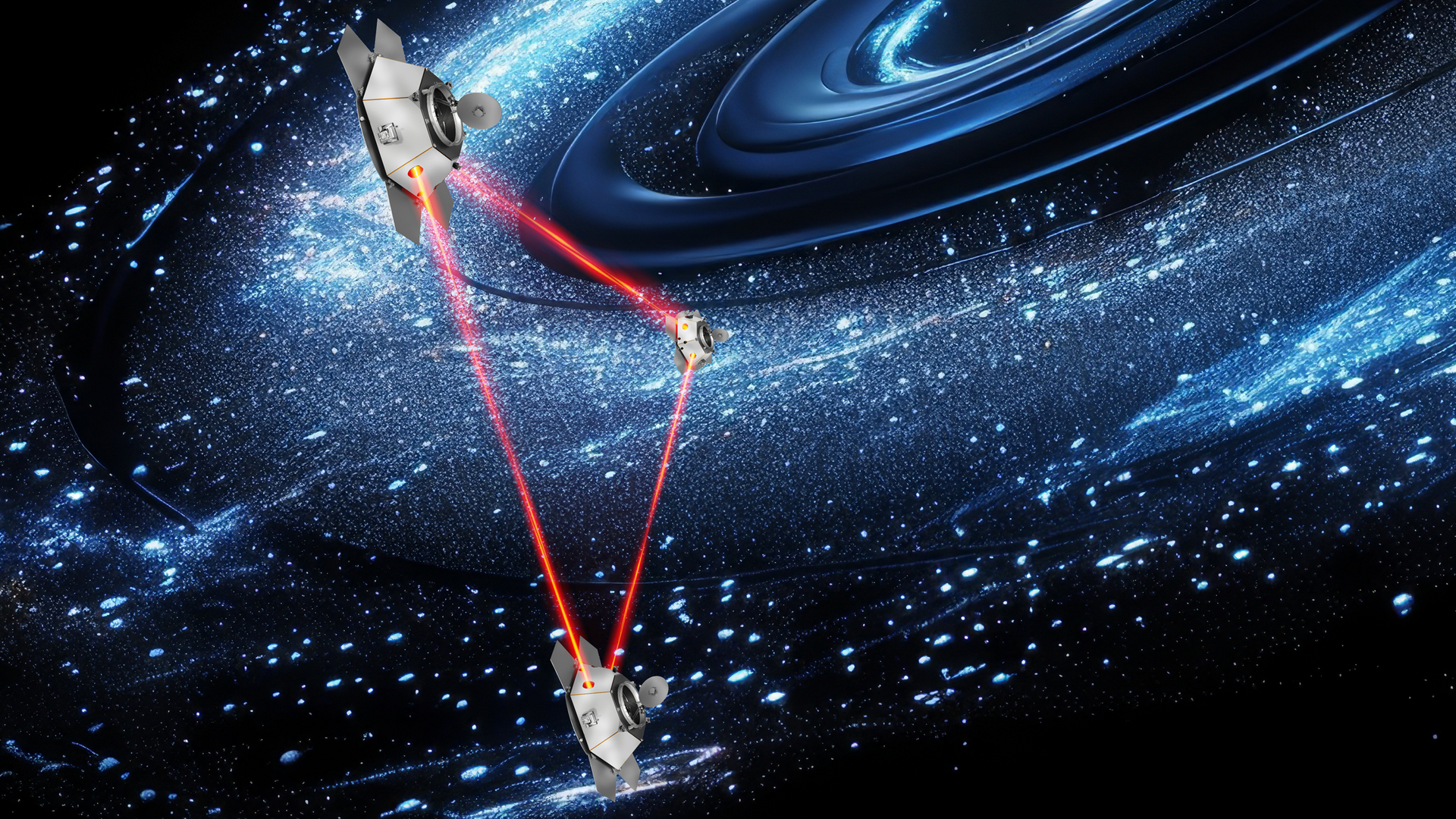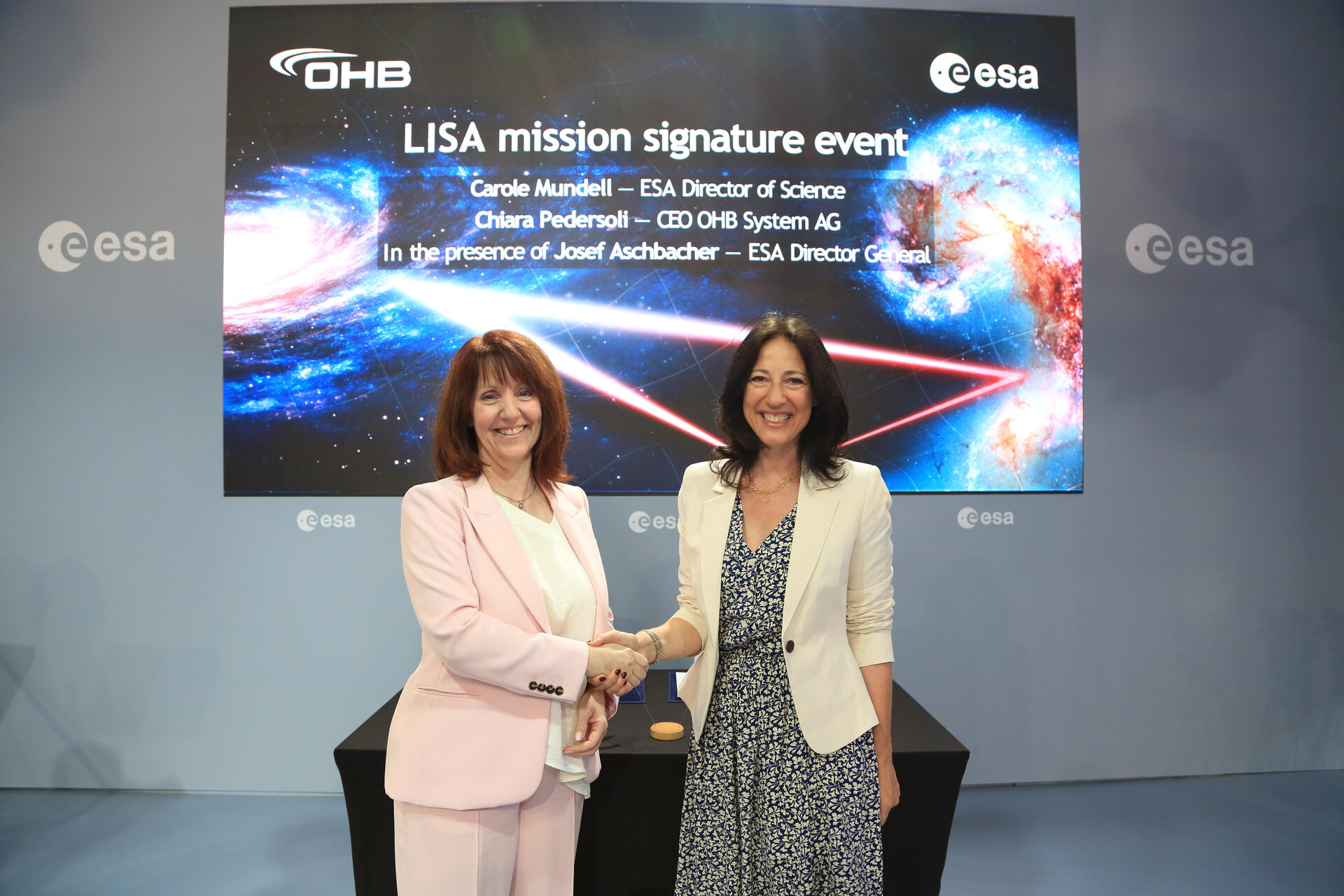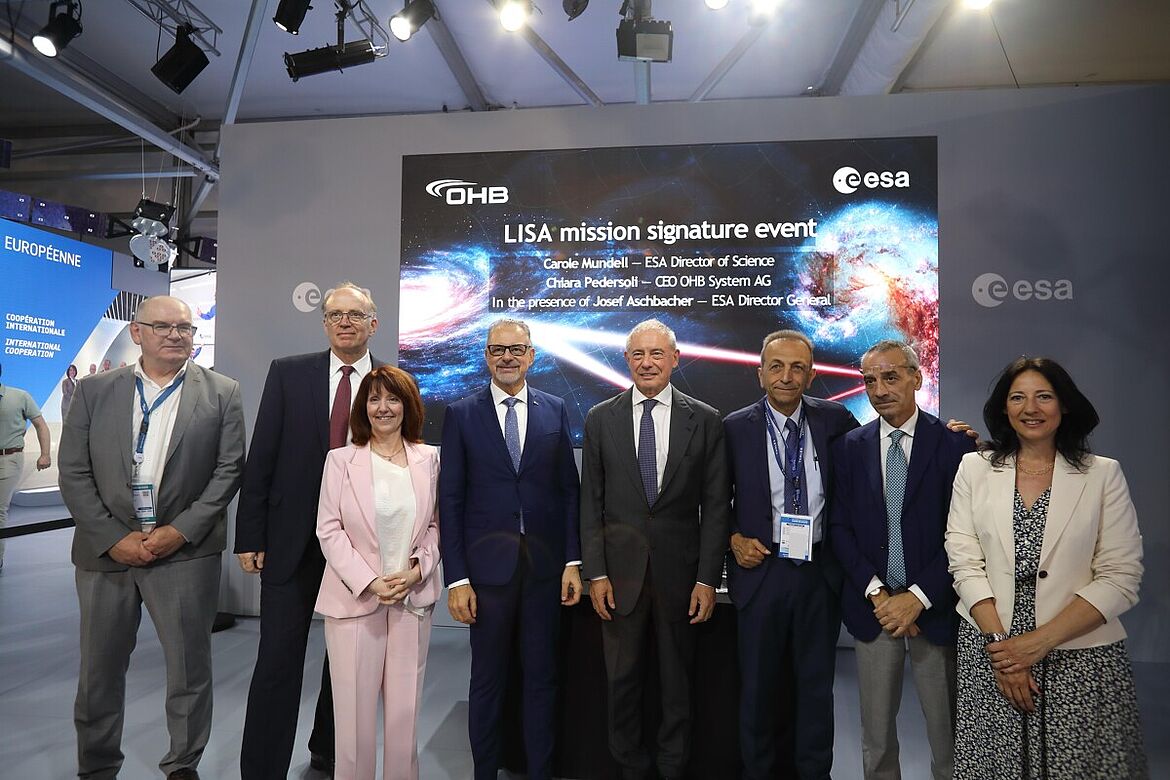Paris / Bremen, 17 June 2025 - All eyes on LISA – the first space-based observatory dedicated to explore the universe by studying gravitational waves. Eagerly awaited by scientists around the world and expected to reveal some of the last mysteries of our universe. The excitement was palpable today when the European Space Agency (ESA) and the space company OHB System AG celebrated the official kick-off at the Paris Airshow. The prime contract for ESA's Laser Interferometer Space Antenna (LISA) mission is worth 839 million Euros. It was awarded to OHB for developing the LISA space segment, which is to show everyone on our planet the universe in a groundbreaking new way.
This includes the construction of a unique constellation of three spacecraft that will fly in a triangular formation trailing the Earth in its orbit around the Sun. Each side of the giant equilateral triangle will span 2.5 million kilometers — more than six times the distance between the Earth and the Moon.
“I’m delighted to celebrate the contract signing today with our partners at OHB who will lead on the implementation of this truly ambitious endeavor. LISA represents many years of pioneering technology developments, hope and belief of our scientific community, and steadfast support from our ESA member states. As the first space mission designed to capture gravitational waves, LISA will open a brand-new window on the dark Universe and test the known laws of physics to their extreme,” said Prof. Carole Mundell, ESA’s Director of Science, and she adds: “When it is flying, LISA will also represent the triumph of precision engineering and international cooperation on a new scale, and place Europe at the forefront of space technology and fundamental science.”
Chiara Pedersoli, CEO of OHB System AG, said during the kick-off event: “We are immensely proud that the European Space Agency and the scientific community entrust us to implement this groundbreaking science mission. Together with our partners we stand ready to bring LISA to life – pioneering our ability to ‘surf the gravitational waves’ and enable us to see our universe in a new way.” LISA will be a thrilling challenge, but also humanity’s next monumental leap in the quest to measure and understand the universe, emphasized Pedersoli and she adds: “Personally, I am certain Einstein himself would be proud to witness how mankind continues to build upon his legacy by proofing his theory.”
Jumping into a new era of astrophysics
When launched, in mid-2035, the three LISA spacecraft will detect the elusive ripples in space-time predicted by Albert Einstein’s general theory of relativity. LISA will do this with high sensitivity and in a particularly low frequency range—both of which cannot be achieved with ground-based measurements. LISA will reveal events all the way back to a time when our universe was born. This will enable scientists, for example, to trace how massive black holes merge and grow across cosmic ages, explore the fundamental nature of gravity, and probe the rate of expansion of the Universe.
Each spacecraft will carry a pair of solid gold-platinum cubes, so-called test masses, slightly smaller than Rubik’s cubes, free-floating in special housings. Gravitational waves will cause tiny changes in the distances between these golden cubes in the different spacecraft.
To capture the space-time ripples, the mission will track these tiny shifts using the uniquely sensitive yardstick of laser interferometry – hence the mission’s name Laser Interferometer Space Antenna, LISA. This technique requires shooting laser beams from one spacecraft to the other and then superimposing their signal to determine changes in the masses’ distances down to a few billionths of a millimeter or shifts of less than the diameter of a helium atom, over a distance of 2.5 million kilometers.
International partnership
Led by ESA, the LISA mission is a collaboration between ESA, its member states, NASA, and an international consortium of scientists (the LISA consortium).
The spacecraft is being built and assembled by the industrial core team led by OHB together with Thales Alenia Space.
Key hardware elements procured by ESA’s member states include the free-falling test masses shielded from external forces, provided by Italy and Switzerland; the picometer-accuracy systems to detect the interferometric signal, provided by Germany, the UK, France, the Netherlands, Belgium, Denmark and the Czech Republic; and the Science Diagnostics Subsystem (an arsenal of sensors across the spacecraft), provided by Spain.
More information:
ESA press release on the LISA kick-off event
TAS press release on the LISA subcontract
Press release of the Max Planck Institute for Gravitational Physics (Albert Einstein Institute)
Contact for media representatives:
Marianne Radel
Head of Corporate Communications
Phone: +49 421 2020 9159
Email: marianne.radel@ohb.de
Contact for investors and analysts:
Marcel Dietz
Investor Relations
Phone: +49 421 2020 6426
Email: ir@ohb.de



